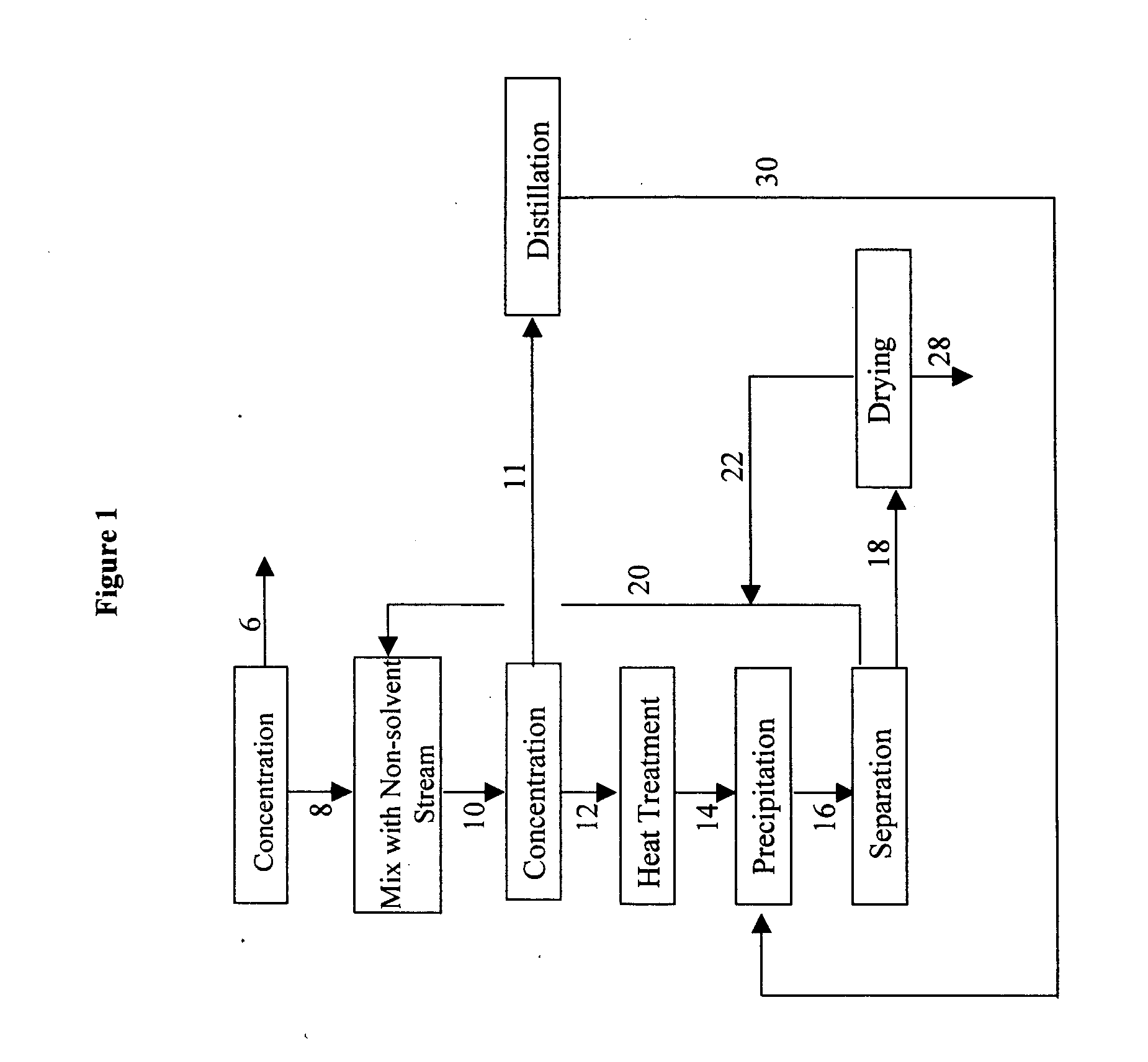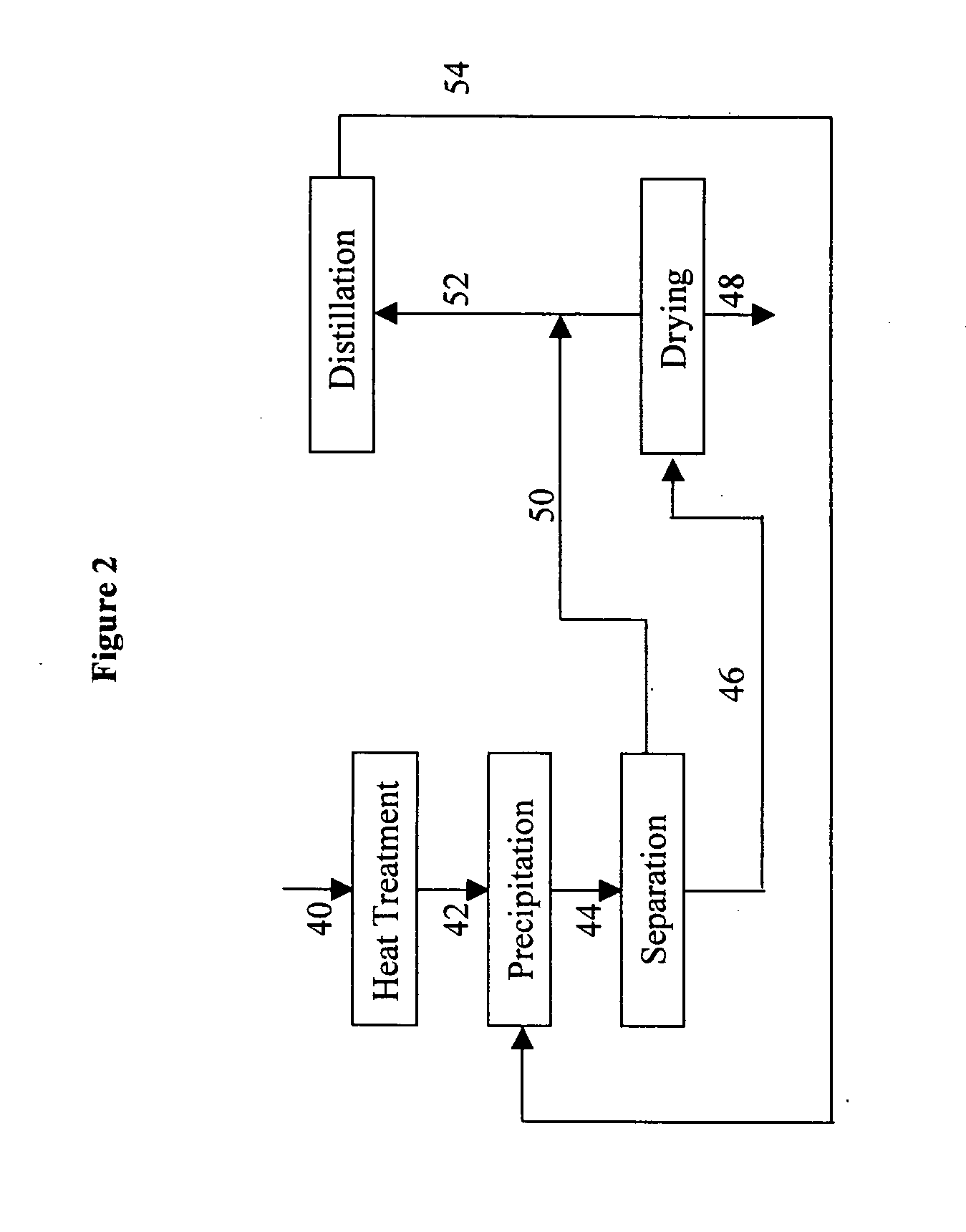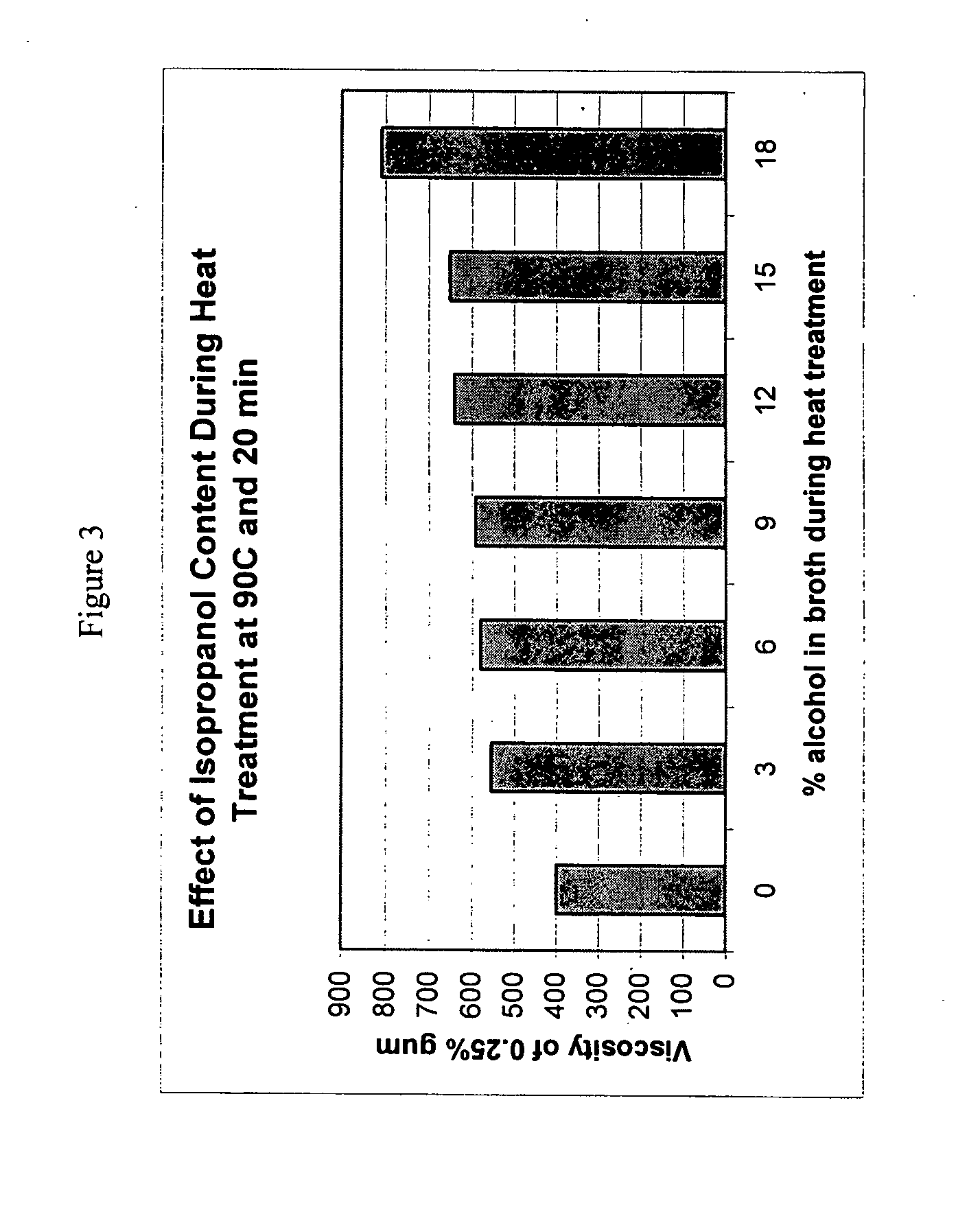Polysaccharide gum and process for its manufacture
a polysaccharide gum and polysaccharide technology, applied in the field can solve the problems of high cost, difficult handling, and high cost of recovering polysaccharide gum, and achieve the effects of reducing the amount of distilled non-solvent, reducing capital and operating costs, and improving the viscosity of heat-treated xanthan gum
- Summary
- Abstract
- Description
- Claims
- Application Information
AI Technical Summary
Benefits of technology
Problems solved by technology
Method used
Image
Examples
example 1
Effect of Isopropanol Content During Heat Treatment on the Viscosity of Rehydrated Xanthan Gum.
FIG. 3 shows the effect of IPA content in the fermentation broth during heat treatment on the viscosity of the re-hydrated gum. Each broth was heat treated at 90° C. for 20 minutes. The gum viscosity increased steadily as IPA concentration in the broth increased.
Rehydrated gum viscosity continues to increase with increases in IPA content in the broth during heat treatment through at least 30%, by weight, of the broth. FIG. 3 illustrates the increase in xanthan gum viscosity when IPA was increased from 0%, through 15%, up to 30%.
example 2
Effect of IPA Concentration in the Broth, and Temperature, During 30 min Heat Treatments on the Viscosities of the Xanthan Gum after Rehydration
FIG. 4 shows the effect of temperature during heat treatment on final gum viscosity. There exists a minimum temperature necessary for optimum viscosity development. Above this minimum, and especially with high IPA concentrations in the fermentation broth, the final gum viscosities remain high. That is, it is not necessary to hit the optimum temperature to attain high gum viscosity, only to exceed the minimum temperature. This figure also illustrates the effect of IPA concentration in the broth on the viscosity of the dry gum. Increasing IPA concentration through about 30% significantly increases gum viscosity.
example 3
Effect of Increasing Xanthan Gum Concentration in Broth during Heat Treatment
FIGS. 5 and 6 show that increases in gum concentration in the broth during heat treatment increase the viscosity of the final gum. This is true whether the fermentation broth contains IPA during heat treatment or not, but is amplified with the presence of IPA. FIG. 5 shows the effect in absence of any IPA during heat treatment; and FIG. 6 shows the effect when the broth contained 30% IPA during heat treatment.
The effect of increasing gum concentration during heat treatment reaches a maximum with about 3% gum. With further increases in gum concentration, no advantage is gained in final product viscosity. On the other hand, the gum concentration can be increased to 6.6% and higher before heat treatment without compromising the quality of the product. This offers clear advantages in, for example, minimizing the amount of non-solvent needed to precipitate the gum.
PUM
| Property | Measurement | Unit |
|---|---|---|
| Temperature | aaaaa | aaaaa |
| Temperature | aaaaa | aaaaa |
| Fraction | aaaaa | aaaaa |
Abstract
Description
Claims
Application Information
 Login to View More
Login to View More - R&D
- Intellectual Property
- Life Sciences
- Materials
- Tech Scout
- Unparalleled Data Quality
- Higher Quality Content
- 60% Fewer Hallucinations
Browse by: Latest US Patents, China's latest patents, Technical Efficacy Thesaurus, Application Domain, Technology Topic, Popular Technical Reports.
© 2025 PatSnap. All rights reserved.Legal|Privacy policy|Modern Slavery Act Transparency Statement|Sitemap|About US| Contact US: help@patsnap.com



